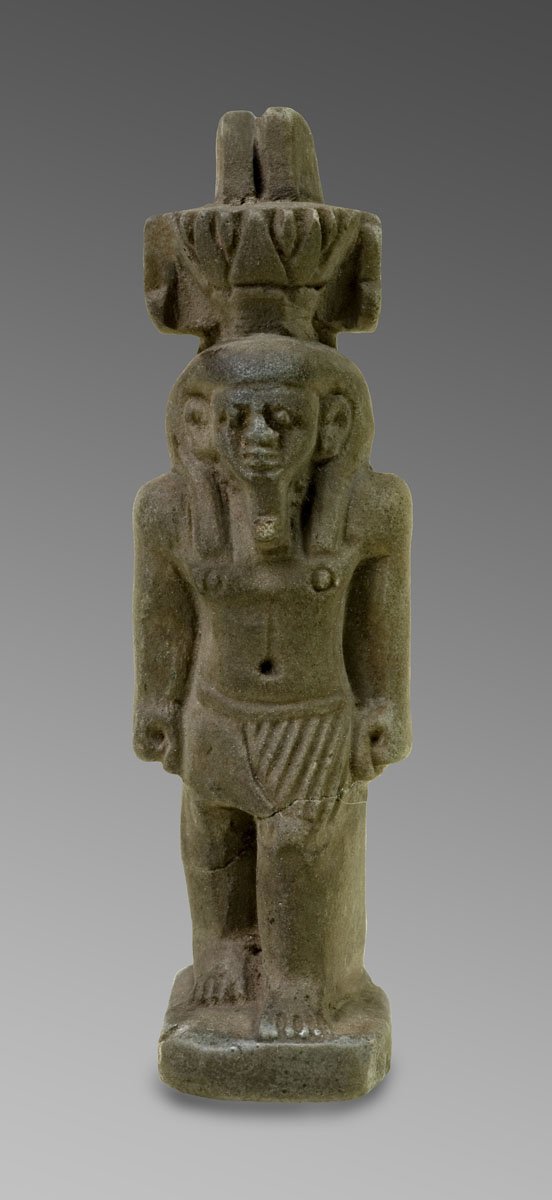
Amulet of Nefertem
Egyptian Art
| Place of production | Memphis (?), Egypt |
|---|---|
| Date | 7th-6th centuries B.C. (664-525) |
| Object type | sculpture |
| Medium, technique | Bronze; hollow cast with wax process |
| Dimensions | 14.3 x 13.5 cm |
| Inventory number | 51.2314 |
| Collection | Egyptian Art |
| On view | Museum of Fine Arts, Basement Floor, Ancient Egypt, Temples and gods |
Apis, “the king of all sacred animals” in Egypt was depicted in this votive bronze statue originating presumably from Saqqara (the necropolis of the city of Memphis), from the period of the Twenty-sixth (Saite) Dynasty. Thanks to the numerous positive characteristics attributed to bulls (procreative power, unfettered life energy) the Apis bull and its cult became part of the rituals connected to Egyptian kingship as early as the beginnings of the country’s written history. On a theological level, the Apis bull was associated with Ptah in Memphis, the most ancient capital of Egypt. In the Late Period, votive bronze statues were produced and erected en masse to pay tribute to the Apis bull, which was considered the living image and earthly manifestation of Ptah. Among them, the proportionately represented and masterly executed Budapest piece is one of the highest quality pieces.
The votive statuette shows the usual depiction of the bull striding forward with its front left leg. It wears a sun-disc with a uraeus-serpent between its horns, while the body is incised with various decorations and symbols of the cosmic significance of the Apis bull. The (white) triangle engraved into its forehead was one of the distinctive body marks based on which the priests were able to recognize the new incarnation after the bull kept in the temple district died. The winged scarab at the front part of the bull’s back and the figure of the vulture-shaped sky goddess engraved further down refer to the cosmic functions of the Apis. Presumably, like the votive objects of other animal cults found in the animal burial grounds in Saqqara, the Apis bronzes were offered at particular festival events, mainly during the festivals of Osiris as well as the New Year celebration and the festive events aimed at the continuation and renewal of the state.
This record is subject to revision due to ongoing research.